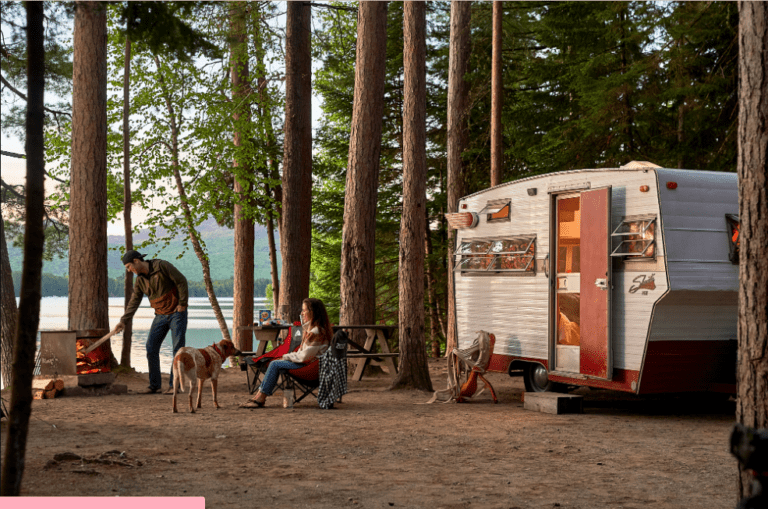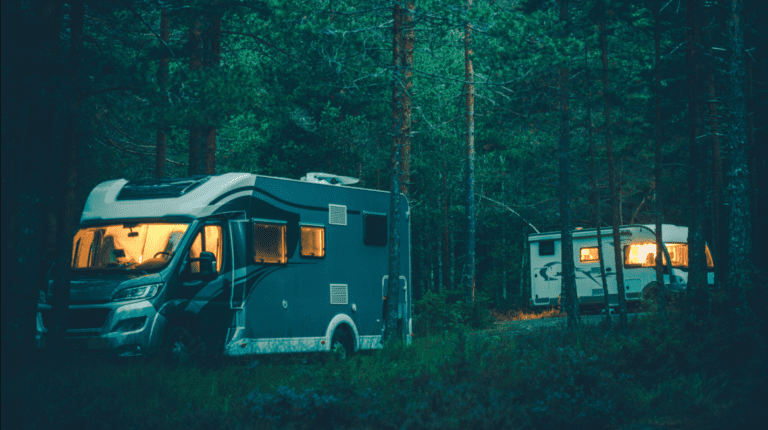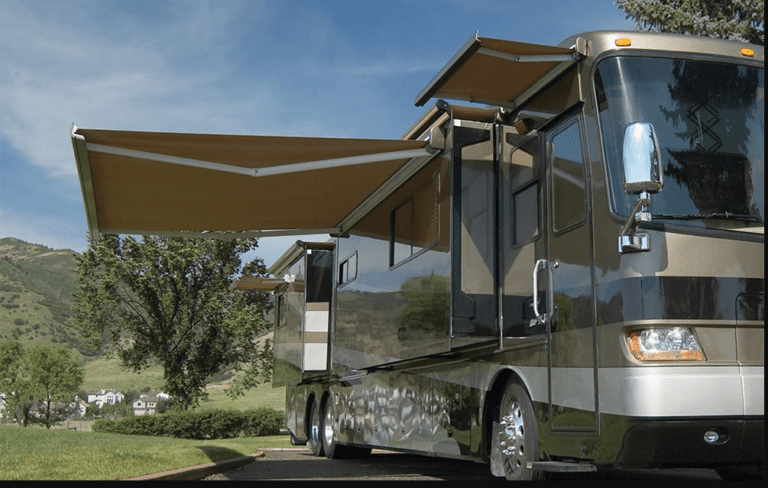How can I keep RV pipes from freezing while driving?
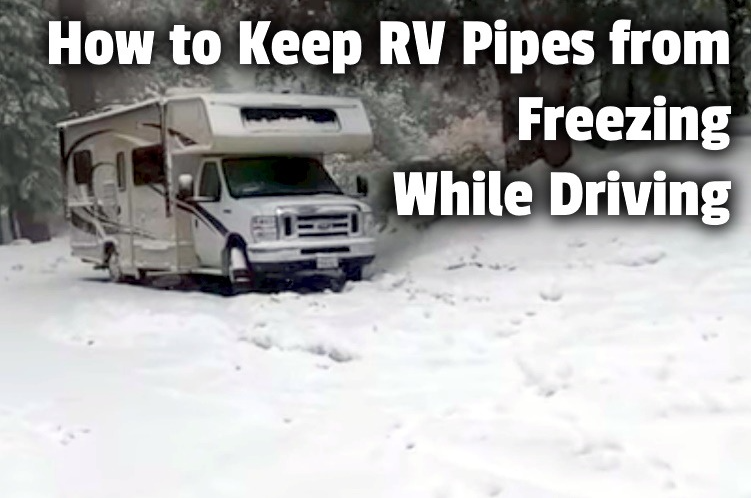
I’m taking my RV on a road trip all over Yellowstone National Park. The weather forecast is looking bitterly cold, so I’m a little worried about the plumbing in my RV. How can I keep the pipes from freezing while I’m driving?

- Eric Schad · Answered Feb 04, 2022
- Reviewed by Shannon Martin, Licensed Insurance Agent.
- A road trip through Yellowstone sounds great. It’s annoying that it’s going to be so cold, but it’s easier to keep your pipes from freezing while driving if you follow these steps:
- Let the faucet in your RV run. When water is moving, it is less likely to freeze.
- Use foam or rubber pipe insulation around any pipes that are exposed to heat.
- If your RV has a generator, turn on the heat while driving.
- Finally, if you must leave your RV unattended, try to find a garage to keep it out of extremely cold temperatures. I hope you have a great trip!
- For peace of mind, make sure you have the right insurance coverage to protect your RV. And consider adding roadside assistance or towing and labor coverage so you don’t get stranded. If your current car insurance company doesn’t offer these products, switch to Jerry’s.
- Jerry is an insurance comparison app that lets you shop for free with over 50 insurance companies at low rates. You’ll get quotes in seconds, and if you ever have a question, agents are just a text away. The average Jerry consumer saves $887 a year on car insurance.
- MORE: Driving in snow: 7 tips for winter safety
- RV Driving Tips
- Let the experts at Jerry’s help you find savings on your car insurance!
- No long forms or spam · Get quotes from 40+ carriers.
- Find Insurance Savings (100% Free)
- Classification white
- 3.5K ratings
- Why You Can Trust Jerry
- Jerry partners with more than 50 insurance companies, but our content is independently researched, written, and fact-checked by our team of editors and agents. We are not paid for reviews or otherwise.
How to keep RV pipes from freezing while driving
Jeff Campbell wrote in the RV FAQ
RV Life | Campers stuck on mountain road unprepared for snow | Snowfall | Winter Camping Tips
Frozen pipes in your RV can cause serious damage. Many RV owners winterize their RVs when not in use. But what if you drive your RV in the winter? Then you’ll want to know how to keep RV pipes from freezing while driving. Here’s what I know from my winter driving:
Just like pipes in a home during the winter, install a leaky faucet inside your RV while driving. When water flows, it is less likely to freeze. Additionally, you can wrap and insulate any exposed pipes or add a small heater to the plumbing areas outside the RV.
Then, of course, you can keep the heat inside the RV while you drive if you have a generator to power it.
we’ll explore the temperature at which RV pipes freeze, whether driving habits can help prevent them from freezing, and how long pipes have to stay below freezing before freezing. And similar topics around preparing your rig. cold weather.
At what temperature will RV pipes freeze?
- As a general rule, RV pipes can freeze when the temperature drops below 32 degrees Fahrenheit for a day. But in many cases, it would need to be below 30 for long periods of time for most RV pipes to freeze.
- It is also a function of how long it has been exposed to cold. After all, freezing is a gradual process. However, it’s not automatic that an RV’s pipes are exposed to the cold. And, of course, it’s not the pipes that freeze, but the water inside.
- Electrician
- Electricians
- Sponsored by YELP
- learn more
- So as an extra precaution, drain your holding tanks and fresh water tanks and flush the lines. Then, when you arrive at your campground, simply connect to the campground water supply without filling your freshwater tank.
- But how cold should it be before you put your camper in for the winter?
- Lucky for you, that’s what I discovered in one of my recent articles. I explained that you should winterize it if the temperature drops below 35 degrees during the day or 30 degrees at night, especially if it is not used or powered.
- Just click the link to read it on my site.
Will driving motion prevent RV pipes from freezing?
The motion of driving an RV can help prevent RV pipes from freezing at temperatures just below freezing. However, if there is water in the plumbing and the temperature in the area is below freezing, they can freeze with movement.
The movement from driving is not entirely different from the movement that occurs when you blow your pipe. It is the movement of flowing water that prevents it from sitting still and freezing.
But opinion is divided on whether you should have yours while driving.
How cold is too cold for an RV?
RVs are designed to be used year-round, but if the air temperature drops below 20 degrees Fahrenheit, it can pose a freezing hazard to camping and plumbing systems.
You will also use a lot of propane trying to keep the camper warm.
So if you know the weather will drop to 20 or lower, switching to winter or driving to a warmer location before parking is your best bet. But sometimes, none of this is a good option.
Can you live in a motorhome in the winter?
This is the theme of a recent article of mine where I explained that you can live in a Class A motorhome, especially the more recently built models. How well it is insulated, the amount of snow and ice, and the temperature are some important factors to consider. Just click the link to read it on my site.
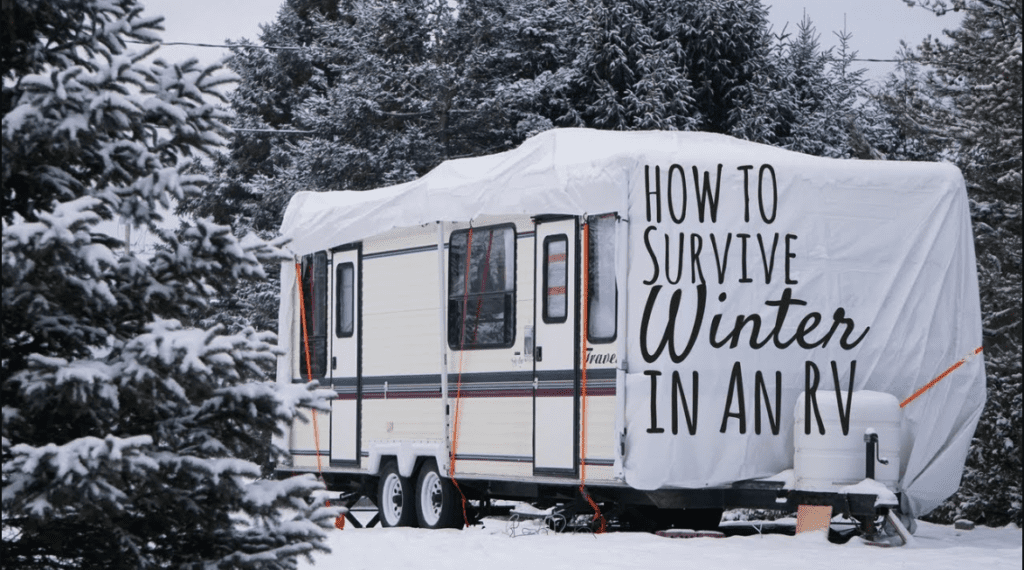
What to do if pipes freeze in an RV?
You can use any of the following to thaw frozen RV pipes: a space heater, a portable propane heater, heat tape, a heat gun, or a hair dryer. Also, open all faucets to allow trapped air to escape, which can pose a risk of pipe bursts. Let’s go through some of the above tips in detail.
Heat tape
This is one of the best and safest ways to unfreeze your pipes. But first, make sure the pipes aren’t cracked before using the tape. It’s called tape, but it’s actually a wire wrapped around the pipe and then plugged into the outlet. The wire is heated, which then heats the pipe, thus unfreezing it.
If your pipes are made of plastic or PVC, be sure to install heat tape with the automatic thermostat so you don’t damage the pipes.
Hair dryer or heat gun
Move the dryer or gun slowly and back and forth over the surface of the affected part of the pipes.A heat gun is ideal for metal or copper pipes, while a dryer can be used on PVC, plastic, copper or metal pipes. If the pipes are PVC or plastic, be careful not to hold the heat gun too close to the surface.And be careful using the dryer in wet conditions.
A plumber’s torch
Move the torch slowly and back and forth over the surface of the affected part of the pipes. The torch is ideal for steel or copper pipes. Be careful not to leave it on one area for too long. Check for cracks before using a flashlight. Are you considering living in your RV full-time? I’ve been in our house with my family for 4 weeks, and I’ve carefully researched and compiled the 25 most important pros and cons.
You will save money, and have the freedom to move. Check out a recent article of mine for the full lowdown. Just click the link to read it on my site.

How to Prepare Your RV for Freezing Weather
- How to keep your RV water pipes from freezing while winter camping
- By Diane D. at RV Living
- This post contains affiliate links.
- Taking your RV on the road in the winter is an exciting experience, especially if you’re a die-hard ski bum. This lets you explore places when they are less crowded and gives you a different perspective. But with a different climate comes different challenges, like keeping your water pipes from freezing.
- You can save your pipes by insulating/heating your water hoses and storage tanks, getting RV skirts, opening cabinets with internal plumbing, and just dumping your gray and black water tanks when they’re full. Can prevent clotting.
Winter camping rv
- From your water hose to your indoor plumbing, there are many different places where the cold can sneak up on you and cause you trouble. Each vulnerable area of your water system will require a different solution, but there are certainly ways you can keep your pipes from freezing without winterizing your camper.
- If you want to learn how to fully winterize your RV, read our article on how to winterize your RV.
- List box
- Protect your RV water pipes from freezing while camping.
- To keep your water flowing freely, you’ll need to take some precautions. So let’s work from the outside.
- Insulate or heat your drinking water hose.
- Your water hose is the most exposed part of your system to the outside elements, and protecting your pipes from freezing starts with this critical piece.
- To start, you can try using regular foam hose insulation. To install it, slide the hose into the open insulating sleeve. You can then close by removing the tape that is covering the adhesive on the open sides and sticking them together.
- M-D Building Products 50142 M-D Weather Stripping Tube Insulation, 3/4 in Pipe, 3 Ft L X 3/8 in T,…
- M-D Building Products 50142 M-D Weather Stripping Tube Insulation, 3/4 in Pipe, 3 Ft L X 3/8 in T,…
- Prevents heat loss or gain to save energy.
- Use on hot or cold pipes.
- Prevents condensation on cold pipes to prevent water damage.
- Check out the latest deals.
- One thing to keep in mind is that unless you want to strip the insulation off and then reinstall it every time you go to store the water hose, this will make your hose too wet. Will make it bulky and may present some storage challenges.
- While this will work well for short periods and near freezing temperatures, you may want to use something more heavy duty for colder conditions.
- Another possibility to consider is a hot water hose, and you have two main options for a hot hose: build one or buy one. There are several different hot water hoses you can buy specifically for RVs, or you can make your own with some pipe tape and heat cable.
SALECamco Hot Potable Water Hose, – 20 F, 25-ft, 5/8-inch ID (22911)
- Camco Hot Potable Water Hose, – 20 F, 25-ft, 5/8-inch ID (22911)
- Water line freeze protection with energy-saving thermostat ideal for -20 degrees F (-28 degrees C)
- Made with NSF-61 certified potable water safe hose.
- Both ends of the hose contain female to male adapters to allow connection to the water supply. Depending on the location of the electricity…
- Check out the latest deals.
Heat cables plug into a power source and provide a steady source of heat to your hose. Many will have thermostats that allow you to set the heat level, and all you have to do is wrap the heat cable against the hose using insulating pipe tape. You’ll be able to turn the cable on when the temperature drops and turn it off when Mother Nature is a little kinder.
If you don’t want to mess around trying to keep your water hose from freezing, you can always take it out of the equation by running it outside your storage tank. You can remove your hose to fill the tanks as needed and store it in between.
Use RV skirting.
Once you know how to insulate RV water hoses, it’s time to look at your indoor plumbing. You’ve probably seen many full-timers doing skirting at various campgrounds, but it’s actually a great way to keep your camper insulated while on the go.
Skirting prevents cold air from getting to your undercarriage and your pipes. Vinyl skirting is the perfect material for travel, as installation is relatively easy and it can adapt to different terrains and ground surfaces. Hay bales are another option that involves minimal work, but they attract other creatures that are trying to stay out of the cold, like mice.
The other great thing about skirting is that you can use it to keep your RV cool even in the summer, and it shouldn’t take up too much of your valuable storage space for traveling.
RV Wind Skirt 48 inch x 120 inch silver skirt panel
RV Wind Skirt 48 inch x 120 inch silver skirt panel.Whether you plan to travel or stay put during the winter, it’s likely that you’ll be driving your RV when it’s a little cold. While you can throw on a coat, boots, hat and gloves to keep yourself warm, you’ll want to think about what your RV needs to stay warm.
Freezing pipes in your RV can lead to a potential problem of bursting, leaking and lack of flow. Many RV pipe systems weren’t designed to handle cold weather, but thankfully it’s easy to prepare to take on the cold.Keeping your RV pipes from freezing while driving can be done in a few ways, often all at once. We’ll talk about a number of options, from letting the water run slowly to insulating your pipes and using a heater.Let the water run – the most basic
Running water freezes more slowly. Have you seen a frozen waterfall? It sounds cool, and you wouldn’t want it in your pipes – but it takes a lot longer for a waterfall to freeze than a river.
To keep water flowing and prevent freezing, do the following:
- Turn on the faucet and take a short shower. Let them drip so you don’t actively waste water. The goal isn’t to completely dry out your fresh water tank, it’s to move to a warmer location or buy time.
- When you get to your location, turn off the faucet or find another way to keep them warm.
- Letting your water run is a very simple, basic way to prevent water from freezing. Running your water is also temporary and should really only be used when trying to put together plans to prevent your pipes from freezing immediately.
Insulate your pipes to prevent water from freezing
There are a few ways to insulate pipes – especially those that lead to the outside: insulation, heat tape, and both at the same time.
Let’s start with heat tape, and it may not be what you think. Heat tape is an electrical wire that you can wrap around exposed pipes with the potential to freeze.
Heat tape requires careful installation for good, secure insulation. Wrap the heat tape around the pipe so that the wire never touches itself, but has a nice, even spread across the potentially infected pipe.
Heat tape is often plugged in. Note that these come in two forms: with and without a thermostat. Heat tape without a thermostat gives you constant heat, which is nice, but probably unnecessary. Heat tape with a thermostat only turns on when it’s cold enough outside – you can have it on all year round.
While heat tape with a thermostat may be enough to protect your pipes and take your mind off these problems, you can also insulate.
Insulation is a bit easier. You can find pipe insulation at the hardware store and wrap it around the pipe, then tape it shut. If you’re not going to be around cold weather particularly often, or it won’t be that cold, this is a good start. Just keep in mind that heat tape is easy to install first and won’t require backtracking.
Note that insulation and heat tape are a great option whether you’re driving or not.
Small space heater
If you don’t want to waste a heater, and are OK with possibly using a little more electricity in a small space – use a space heater. A space heater can provide temporary warmth for a small area and often your pipes are a good size to fit close to the space they meet outside.
A space heater also heats up relatively quickly. The only downsides to a space heater are that you won’t be plugging it directly into the pipes, and they can take up a bit of battery or gas depending on how you’re running at the time.
A small space heater is great if you’re going to be driving for a few hours and want to make sure the pipes stay warm. Drain the water and close it.
Water cannot freeze if it is not in the pipes. This method only works if you have an unexpected cold snap and have a place to get water if needed. You can drain your tanks, drain your water system by either running or draining your fresh tank, and turn off your water. If you don’t want to go through the effort of insulating your pipes, don’t want to leave water running while driving, and don’t have a space heater, this works. You should only plan on overwatering once you’re somewhere warm.
Add antifreeze.
While this isn’t specific to driving, it can certainly be done before driving through an area that’s cold enough to freeze your pipes.
You can add RV antifreeze to your fresh water tanks. Make sure it also says “safe for RV septic,” and that it’s not automotive engine antifreeze – they can’t be more hostile to their effect on you.
Antifreeze has a much lower freezing point than water and will prevent your water from freezing on the go. It is also safe to drink when diluted with water in your RV water system.It’s especially convenient and inexpensive if you don’t go to cold places often.
Protect your RV sewer pipes and tanks from freezing.
Here’s one of the oldest tricks in the book to keep your pipes from freezing: keep the water running constantly. This is also one thing you should never do to your sewer line in freezing weather.
But what’s wrong with keeping the gray water tank open and running a small, steady stream through the kitchen or bathroom? Distance is the answer. There is less land (pun intended) covering your wastewater in the home and it is much better insulated because it is incorporated well underground into the sewer or septic system.
When you’re camping, water has to reach the bottom of a sewer pipe that’s fully exposed to the outdoor elements, and spoiler alert: it won’t make it. What will happen is that you will gradually freeze more and more water until the entire opening of the sewer is frozen and blocked, and then you will have an even bigger problem on your hands.
Instead, you can insulate your sewer line using the same pipe insulation as your water hose, you can use heat cable, or you can buy “freeze-proof” sewer lines that are specially insulated. But it is designed for winter camping. The other big thing you can do to prevent poopsickles is to only dump your tanks when they are completely full, and let the water run full speed down.
Radiant Solutions Co. Heat Cable for Pipe Freeze Protection, 24 ft., with built-in thermostat…
Radiant Solutions Co. Heat Cable for Pipe Freeze Protection, 24 ft., with built-in thermostat…
Cold Weather Only: Our heat tape for water pipes is designed to turn on only in cold weather. Please do not test in a hot environment -…
American Support: A knowledgeable, Minnesota-based company with expert support staff you can actually talk to! We are excited to help…
Multiple Uses: Use inside or outside all types of water pipes including copper, steel, PVC, ABS, PEX, concrete, etc. can do. As for your holding tanks, you can try adding very small amounts of antifreeze directly to the tanks (except for your freshwater tank, don’t add antifreeze to your drinking water) or you can use electric heating. Can get pads that attach to the bottom of the water. tank and heat them from outside.
Preventing Your RV Water Filter From Freezing
It’s a small part of your overall water system, but you’ll definitely want to know how to keep RV water filters from freezing on you. In many cases, you can get away with using foam insulation and heat tape to protect the water filter from the outside cold, just like your water hose.
Sometimes, however, it’s not worth the trouble or you’re going to areas that are too cold to beat with foam insulation. In these cases you can fill your freshwater holding tank by running water through the filter, then drain the filter to prevent it from freezing.
How to prevent RV water pipes from freezing while driving
If you’re considering the prospect of cold weather camping for the first time, it’s probably a scary prospect. Some RV forums recommend leaving your furnace running while driving to prevent your pipes from freezing while driving, while others say it’s not something to worry about.
Other than keeping the furnace on, there isn’t much else to how to keep RV pipes from freezing while driving and I wouldn’t worry about it unless you spend a lot of time in sub-zero temperatures.
I would however drain as much water as possible from your pipes before hitting the road. Simply disconnect the water supply and make sure your water pump is turned off. Then turn on all your faucets and flush your toilet until nothing comes out. This will leave some room for expansion, if it’s cold enough to freeze. Rv driving snow in winter.
How cold does an RV pipe have to be to freeze?
Water by itself will freeze at 32 degrees Fahrenheit (0 degrees Celsius) without insulation or protection, but the water in your RV’s pipes usually won’t begin to freeze until it reaches 20 degrees Fahrenheit ( -6.7 degrees Celsius). Once it reaches 20 degrees, it has to stay cold for six hours straight to freeze your pipes. If the temperature is around 32 degrees, it will take about 24 hours.
What to do if your water pipes freeze
If the worst should happen and you find yourself with frozen pipes (hopefully not popsicles), there are a few things you can try to get your water flowing again. First, turn off the water supply and inspect your pipes for signs of damage. You want to be prepared in case the snow freezes enough to burst a pipe.
One way to unfreeze your pipes is to run a hair dryer over the pipe connections and frozen sections. Just keep in mind that hair dryers use a lot of currents so you’ll want to be plugged into shore power.
Removing, bypassing, and replacing the water filter
The first step in RV winterizing is to remove and bypass all inline water filters inside your unit. This step is important to prevent winter chemicals from damaging the filters. Use this opportunity to replace the filter if it is more than three months old or dirty.
Drain your black and gray water tanks.
Before storing your RV, you should drain all wastewater and clean your black and gray water tanks. This step will not only prevent water from freezing but also prevent bacterial growth and other sanitary problems.
Drain your black water tank first, followed by your gray water tank. Next, clean the black tank using a built-in rinser or backwasher and a special black tank cleaner.
Drain the water heater and lines.
- Before draining your water heater, turn it off and let it cool. Then, remove the drain plug and open the pressure relief valve so that the water can drain freely. Never drain your water heater if it is hot or the water pressure is high.
- Next, drain the water lines by locating and opening the low-level drain lines for hot and cold water. You should turn on all the faucets and flush the toilet to make sure you get all the water out of the lines.
- Bypass the water heater.
- To prevent antifreeze from flowing into the water heater, you need to bypass it. Your RV may already have a bypass. If not, you can install a new one or schedule an installation at your nearest service facility.
Valterra P23505LFVP Water Heater Bypass Kit
- Valterra P23505LFVP Water Heater Bypass Kit
- Price:
- Buy now on Amazon.
- We may earn a commission at no additional cost to you by clicking this link to make a purchase.
- Add antifreeze.
- To add antifreeze to your system, install a water pump converter kit or disconnect the pump inlet and place it inside a bottle of antifreeze.
Camco Pump Converter Winterizing Kit
- Camco Pump Converter Winterizing Kit
- Price:
- Buy now on Amazon.
- We may earn a commission at no additional cost to you by clicking this link to make a purchase.
- Next, turn off all faucets and turn on your water pump to inject antifreeze into the water system.
- After pressurizing your system, go around to each faucet and turn them on until the antifreeze comes out. When you are sure that antifreeze has spread into your water system, turn off the water pump. Antifreeze all the drains in your RV, then flush some of the water down your toilet to prevent the rest from freezing.
- After following the steps above to winterize your RV, you can put it in storage with peace of mind that your pipes won’t freeze. You can also winterize your RV on your next camping trip.
Preventing frozen pipes at the campsite
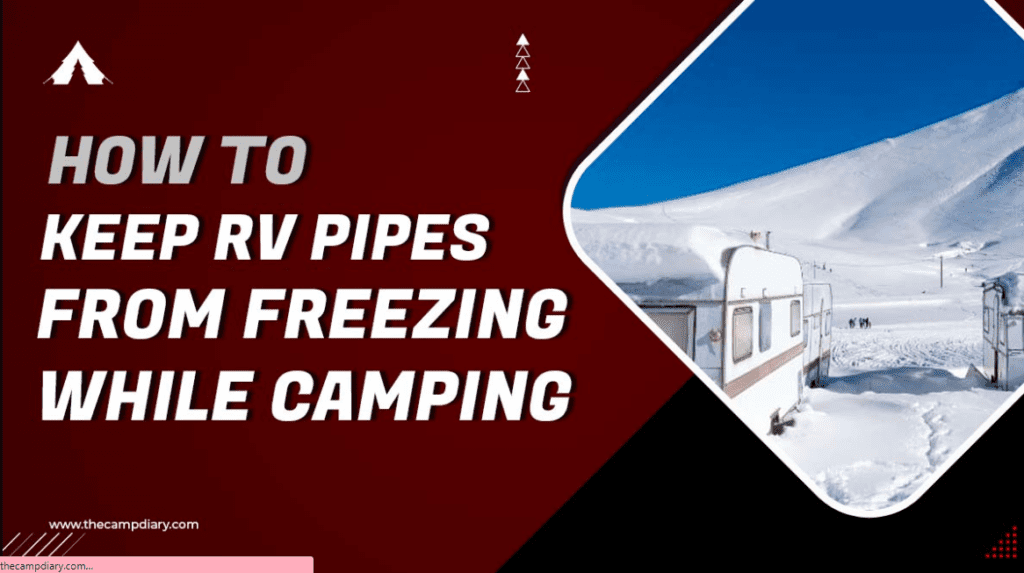
- Consider keeping your propane supply on and running your furnace on a low setting when you’re driving to a campsite. If you can’t do this safely, winterize your RV until you get to the campsite.
- If you drive to a campsite in sub-zero temperatures, ice can build up around your water system’s dump valves and termination cap. If this happens, you can quickly melt the ice using a hair dryer or heat gun when you arrive at the campground.
- When you arrive at the campsite, flush the system’s antifreeze by connecting a hose to the main inlet and opening all faucets. Let the water run through your system for about ten minutes to make sure you remove all the antifreeze.
- After flushing the antifreeze from your RV’s pipes, fill your fresh water tank, but not to capacity. If the water freezes, there must be enough space for the ice to spread without risking the tank bursting.
- Where possible, use your holding tanks as a fresh water source — not city water. If you connect your system to a city supply, water can freeze in your hose.
- Campsites with electric hookups are generally preferred for RV camping in the winter, as they allow you to run an electric heater, which will save you on propane.
- Important: Your electric heater should have an automatic shut-off feature for optimal safety. Never leave a space heater running unattended.
Wrap your water hoses.
In addition to winterizing your RV, you should wrap your outdoor water hoses, including your sewer hose, to insulate them and prevent the water inside them from freezing. This step is especially important if you are using city water to supply your RV.
To wrap your outdoor hose, you will need:
Pipe heating cable kit
- Pipe Wrap Insulation
- Electrical tape
- Waterproof all-weather tape
- Start by laying the hose on the ground and making sure there are no kinks in it. Then, run the heat cable or tape down a length of hose, so the heat cable plug and thermostat are not part of the wrap. Connect the cable and hose about one foot apart using tape.
Frequently Asked Questions
At what temperature will pipes freeze in winter?
Several factors determine the temperature at which your RV pipes will freeze, including the insulation you have, the type of piping you have, whether you use heat cable, and the rate of temperature change.
Generally, it takes 24 hours for the temperature to drop below 32°F before the water in your RV pipes freezes. You can prevent this from happening by following the steps outlined above.
What happens if an RV pipe freezes?
When RV pipes freeze, just like any other pipe, the frozen water in the pipe expands and puts tremendous pressure on the pipe and any connections. This can cause the pipe to crack, burst or burst, potentially causing water damage or a sewer leak.
Will RV Holding Tanks Freeze?
Yes, just like the plumbing in your RV, the contents of your holding tank can freeze. This can cause significant damage to your tanks and any associated plumbing that is expensive to repair.
Should you cover the camper in winter?
If your RV sits outside during the winter months, you should consider investing in an RV cover to protect it from the elements, bird droppings, tree sap, etc. A high-quality cover will last for years and provide plenty of protection for your camper.Related: Are RV Covers Good or Bad? (Advantages and disadvantages)A cover is not necessary for indoor storage, unless the area is dusty or if you also use the space for DIY or construction work. There is no need to cover your RV while camping. Either way, don’t forget to winterize your RV before storing it for the winter.
How cold is too cold for an RV?
Your RV can withstand nighttime temperatures in the low 20s without issue, provided you take all the necessary precautions. If you winterize your rig, fill up on propane, use a tank heater, and insulate your hoses, you won’t have to worry about water freezing in your pipes. To make cold temperatures easier to manage, choose campsites with electrical outlets.
Why does it matter if a pipe freezes?
No matter where you are, it’s in your best interest to keep those pipes flowing freely. In the short term, you won’t be able to use water or a water hookup in your camper. Since one of the many perks of RV travel is access to running water, this is a definite fail.
More troubling, frozen pipes can contribute to costly road repairs. When water freezes, it expands, meaning ice can damage pipes and water tanks. To avoid these problems, take the proper steps to winterize your RV before taking it out into freezing temperatures.
How long does it have to be below freezing for RV pipes to freeze?
It only takes less than 24 hours of low temperatures (below 32 degrees Fahrenheit) for the pipes in your RV to freeze. Since the average commute is much longer than that, you should definitely act ahead of time.
If the bottom of the RV is clogged or hot, the pipes may last longer. Similarly, if the RV has good insulation, it will take longer for the snow to settle. Any steps you can take to protect your pipes will pay for themselves later.
How Can I Keep My Black RV Tank From Freezing?
First, take a look at where your holding tanks are located. If they are above floor level, you won’t have to worry too much about freezing because the heat from the furnace will keep the cold out. On the other hand, if the tanks are below ground, they will freeze very quickly.
In either case, there is a non-toxic antifreeze made specifically for RVs. You’ll be able to tell it apart from the poisonous variety by its color, which is usually pink rather than bright green.
Completely empty your blackwater tank and close the dump valve. Pour two quarts of non-toxic antifreeze down the toilet. How much antifreeze you need will depend on the size of the tank, so add a quart or more if necessary. You will need to add more as the tank will slowly refill as the waste material will eventually weaken the antifreeze.
If you have a gray water tank, cover your bases by pouring an equal amount of antifreeze into the sink or shower drain. Try not to fill the tanks more than half full before emptying them and repeat the process as above.
How can I keep my fresh water tank from freezing?
When it comes to protecting your freshwater tank, you have a few options.
First, check the location, just like you did for the black water tank. For tanks that are located above floor level, wrap a drum or heater blanket around the outside for extra protection. Holding tank heating pads is another option, but keep in mind that you’ll need either DC current or a 120V outlet to power one of these. Strong adhesive heating pads can also be used for tanks that are placed under the RV.
Another option is to winterize your holding tanks as if you were putting the RV into winter storage. If you’ve taken this step, you can still use the RV during the colder months. You should only bring plenty of drinking water, and use the bathroom facilities in campgrounds and rest areas whenever possible. It will be challenging, but you won’t have to worry about your tanks freezing while RV winter camping.
At what temperature will pipes freeze without heating?
Because temperatures can vary so much from one location to another—even within the same state—it can be difficult to tell when you’re approaching a danger zone. However, it’s important to remember that when RV pipes are exposed to elements without heat or insulation, they begin to freeze at temperatures of 20 degrees Fahrenheit. Anyone planning RV winter camping should take whatever precautions are available to avoid this.
Can an RV freeze overnight?
Although it only takes 24 hours of continuous low temperatures for RV pipes to freeze, you probably don’t need to worry about them freezing overnight. This is because the weather is usually slightly warmer during the day, meaning that the below freezing temperatures will only last for a few hours. It will take longer than that for the water in your tanks to freeze completely, so occasional use of the facilities will also help mitigate the risk.
What else can you do to prevent pipes from freezing while boondocking? First, you can check weather reports, especially hourly forecasts. This will tell you roughly when freezing temperatures will start and how long they are expected to last.
You can also keep the inside of the RV as warm as possible. Open cabinet doors under the sink to circulate hot air around the pipes. Also keep the bathroom door open.
Since running water does not freeze, keep the faucet running slowly. Don’t overdo it – you don’t want to over empty your fresh water tank. This is a trick.
Result
In the article, we learned about the temperature levels at which RV pipes are likely to freeze and whether driving habits can prevent it from happening.
We also checked how long it had to stay below freezing for the pipes to freeze. And, we looked at how cold is too cold for an RV and what steps you can take if the pipes freeze.
Here are a few ways to keep your RV pipes safe when you drive in the cold. Some methods like space heaters or antifreeze are mainly temporary but effective. Heat tape and insulation work well if you’re going to be cold for a long time, but may not be necessary for everyone.
Consider the weather forecast and your needs and work to keep the pipes flowing as much as you are comfortable with.



